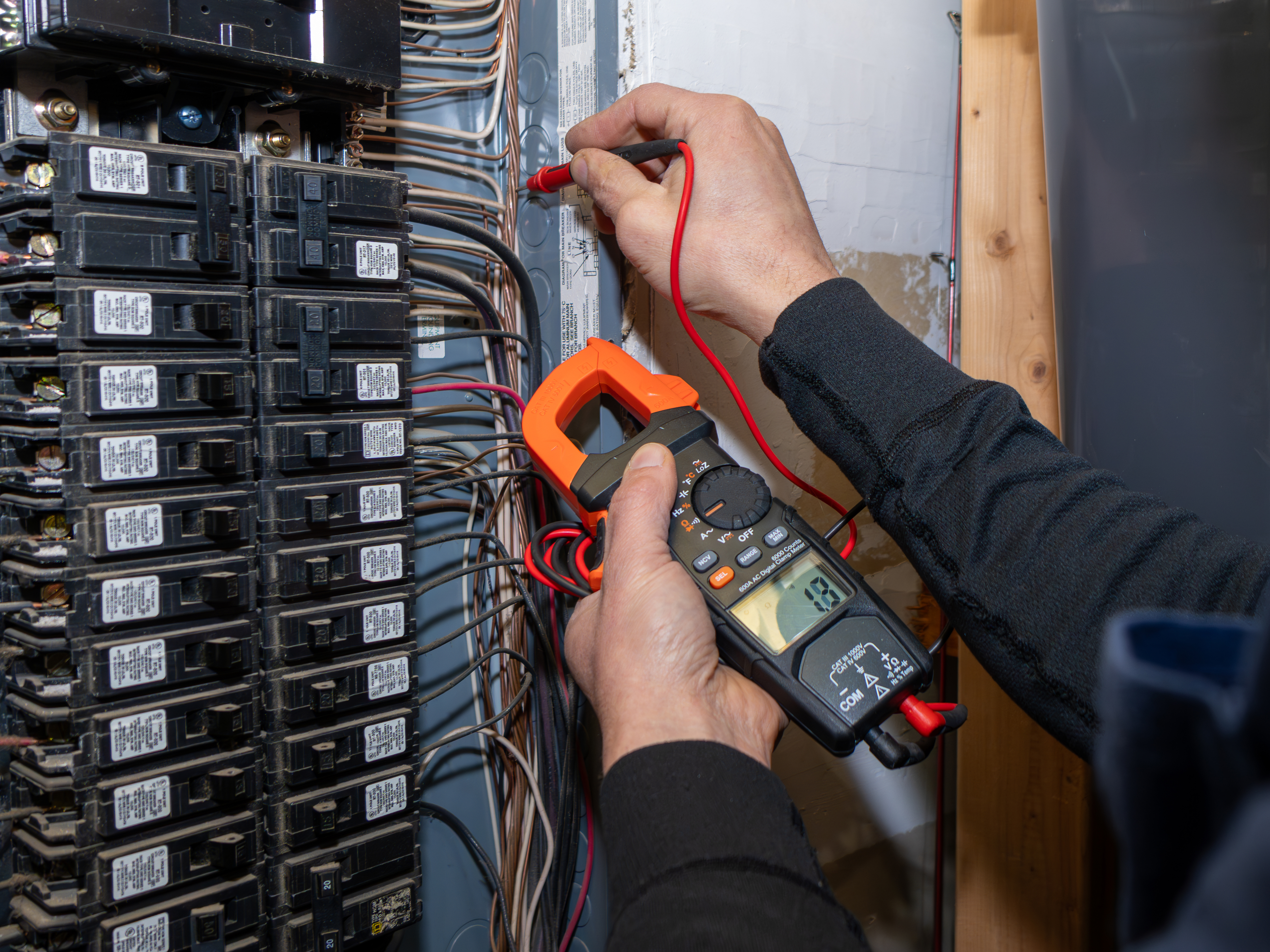
How much does it cost to add an electrical outlet in Los Angeles? Discover typical prices, permit needs, and factors that affect installation costs in L.A.
Proper wire sizing is vital for safety


Handling electrical installations requires a qualified electrician.
125 amp wires are available in copper and aluminum.
125 amp copper wire is thinner but more costly than aluminum.
Proper wire size is essential for electrical safety.
Installing a whole-house generator or extending electrical service in your home through a subpanel requires using the correct wire sizes, including 125 amp wire size.
Hiring a qualified electrical contractor is necessary for this type of electrical work. However, having wire-sizing information, such as the proper 125 amp wire size, will help you better understand a price breakdown for subpanel work or the cost of installing a whole-house generator.

Electrical wires come in various sizes to accommodate different electrical loads or how much electricity they can safely handle. We measure wire sizes by their thickness and express the measurement in gauges. The loads they handle, we measure in amps (A), volts (V), and watts (W).
AWG means American Wire Gauge and is one of the standards that denotes wire gauge or thickness. Another measurement notation when dealing with large-diameter wires is kcmil or thousandths of circular mils where one kcmil equals 0.5067 mm squared.
The larger a wire's diameter, the lower its gauge number representation and the more amps it can safely handle. In general, household circuit wire sizes range from 14 AWG for 15A circuits to 6 AWG for up to 60A ones.
When discussing larger amp loads for electrical service, sub-panels, or whole-house generator feeder lines, we're talking about wire sizes between 4 AWG to larger than 1 AWG. Wires larger than 1 AWG use 1/0 AWG or 0 AWG up to 4/0 or 0000 AWG. The numbers get bigger as the diameter increases. Beyond 4/0 AWG, the measurement changes to kcmil, a direct measurement of the wire's diameter.
The current standard material for household circuitry wiring is copper. However, copper and aluminum wires are common and legal for use in large-gauge electrical applications, such as feeder wires to your home.
Copper wire is more costly than aluminum but less resistant to electrical current. You can use smaller diameter copper wire than aluminum for the same amp load. Aluminum wiring requires specific hardware for installation to handle the metal's tendency to expand and contract.
Small-gauge aluminum wires for household circuits were popular once but no longer meet building code requirements.
| 125A Copper Wire | 125A Aluminum Wire |
|---|---|
| 2 AWG | 1/0 AWG |
| 0.2576-inch diameter | 0.3249-inch diameter |
| Max amps 130A | Max amps 135A |
Installing the correct 125A wire size depends primarily on the amount of current passing through the wire. The chart below contains typical household copper and aluminum wire sizes based on amps.
| 100A | 4 AWG | 2 AWG |
| 125A | 2 AWG | 1/0 AWG |
| 150A | 1/0 AWG | 2/0 AWG |
| 200A | 2/0 AWG | 4/0 AWG |
Properly sizing wires to meet electrical current demands is necessary to avoid overheating and is more than a simple electrical safety tip. The movement of electricity through wires creates heat due to the friction of a wire's resistance. A wire's AWG or diameter affects its resistance measurement or ohms. Larger gauge wires have less resistance than smaller ones.
Friction heat can be excessive in wires too small for the current passing through them. Electrical fires can result from this condition. So, it's crucial to install the correct wire size for the electricity that will travel through them. Luckily, your local electrician will know the requirements and code restrictions for your location and is indispensable when installing or servicing large electrical installations.
Jiovany and his team were so great from the start, at communicating then at the job, fast and dedicated. Didn’t leave until we were happy with every detail. They went far and beyond to make the place spotless and pristine. Reliable, responsible and respectful.
AJ was immensely responsive, professional, and easy to work with. Would wholly recommend to anyone in need of electrical work!
One has to be careful with the brokers on the internet now. Last year I was scammed in the binary trade option by a broker I met on instagram. I invested $89200 which I lost, I couldn’t make a withdrawal and I slowly lost access to my trade account for 3 months. I was frustrated and...
I contacted the chimney guys last week for an inspection and cleaning service, everything is done and thank goodness they came because they removed a lot of dirt and they told me that the person who came for maintenance last year had done nothing! So now you have my trust.
We contracted with Maintenance Floor Services for many years to clean a 6 story medical office building. I have nothing but positive things to say. The team exhibits a high level of trustworthiness and professionalism. The building was treated with the upmost care. You can contact Javier...
everything was perfect, if anything happens I will definitely contact you again
Roman is a breath of fresh air. He comes into your home and get everything that you need done. I highly recommend him.
I hired Mr. Kim to restore our gym equipment pads and benches. The quality of work was great and was completed as promised. I gave the value a 4star only because I felt the price was too high but so is everything else. We plan on using Mr. Kim again in the near future... Thank you, Mr. Kim
I was really satisfied with the pleasant and quick service provided today. They quickly created a key replacement for my 2013 Toyota Camry. I was blown away! And I highly urge you to choose this locksmith for your key-making requirements.
Ramon Cordova was prompt, professional, and very knowledgeable about the various things we needed done. He arrived promptly to assess the work we needed, then arranged a return appointment. To our benefit he was able to arrive a day earlier than originally planned. We had recently bought this...
From average costs to expert advice, get all the answers you need to get your job done.

How much does it cost to add an electrical outlet in Los Angeles? Discover typical prices, permit needs, and factors that affect installation costs in L.A.

Upgrading your electrical panel boosts safety, supports modern appliances, and may increase home value. Learn electrical box replacement costs in Los Angeles.

Los Angeles homeowners can upgrade or fix their home electrical system with a large-scale rewiring project. Here’s how much it can cost and how long it’ll last.

Your home might have a variety of electrical outlets, depending on how old the structure is and what type of appliances you use. Learn the different types of outlets, how they work, and how you use them.

Removing an alarm system may require the assistance of a professional electrician. Find out the average cost to remove old house alarms.

Learn a new skill and find out how to wire a light switch (safely) in your own home. This is one project that’s sure to light up your day.